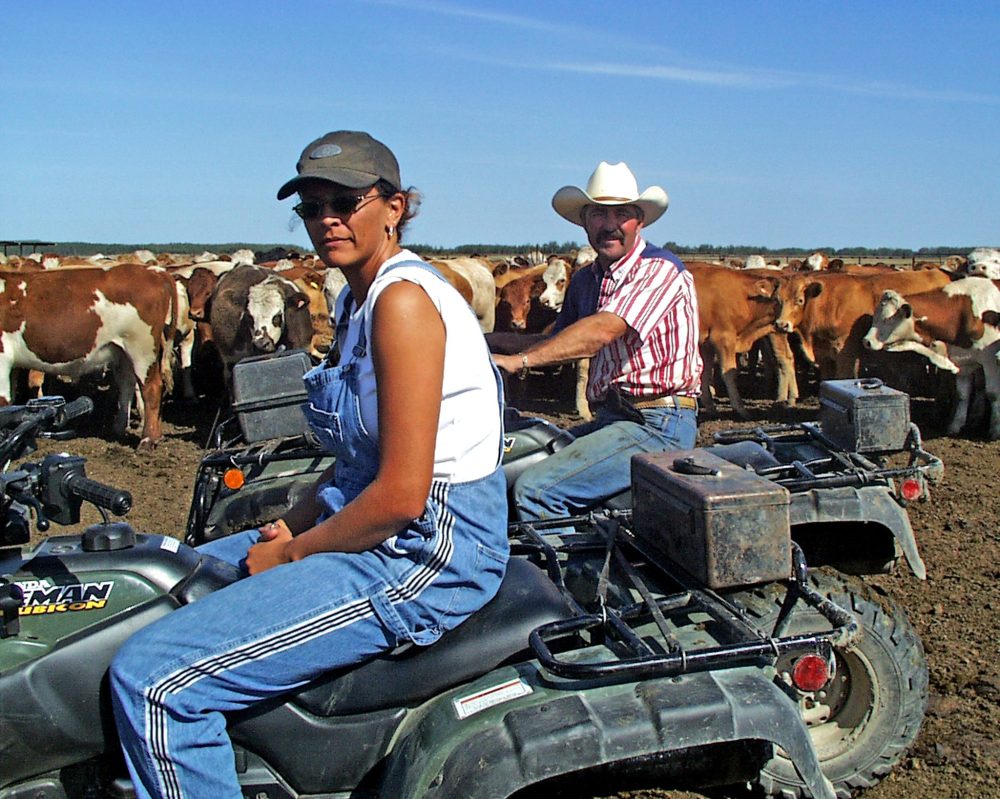COLUMN: Carillon Flashback September 19, 2002 – ‘City of pigs’ triggers natural grazing pastures
Advertisement
Almost 5,000 yearling beef cattle graze on 6,000 acres of natural grassland fertilized with manure generated by 100,000 pigs housed in 43 nearby barns. Four years ago, Robert and Jodi Krentz, who own Evergreen Farms near Pansy, sold parcels of land to hog producers.
They held back grazing rights and made an agreement with the producers that manure generated by the hog operations would be available for their pastures.
Robert Krentz says he triggered the barns because he wanted the manure. They now have a “city of pigs” in their neighborhood, supplying Evergreen Farms with all the good fertilizer they need.

This unique partnership, along with their success in improving their pastures through an innovative rotational grazing system, was recognized by the Seine-Rat River Conservation District naming Robert and Jodi Krentz the District’s 2002 Farm Family.
“Our goal is to keep our soil healthy,” says Krentz. “If you keep the ground healthy, the forage on top will be healthy. You have to look at the bottom, not the top.”
During the first two years of grazing cattle, they planted alfalfa, but now they are allowing the land to return to its natural state. Instead of controlling quack grass with chemicals, they fertilize it with hog manure. “Wherever you see a lagoon, you see quack grass,” he says. “We just sit back and let it happen.” He expects within 10 years their land will have returned to its natural state.
Krentz says he is working towards a goal of spreading manure once a year – in July. This is the time of the year when the grass gets the most benefits from the fertilizer.
There is also less danger of water contamination in July, because the water level is at its lowest. And odor problems are reduced through upward drifts of northwesterly winds. “Ninety percent of the smell goes up when there are northwest winds,” he explains, adding the low-pressure east winds create all the odor problems.
A key component of their success is rotational grazing. Evergreen Farms has divided its land into nine rotational sites.
Each site is one section and divided into eight paddocks. At the center of each paddock is a water trough and a chute for loading and vaccinations. Each site has about 500-600 head of cattle.
“Through rotational grazing we are harvesting the grass when it is at its highest (nutritional) level,” he explains. “The calves always get to eat young grass.
Swamp grasses, which are usually considered poor quality grasses when baled, are good sources of protein when fertilized with hog manure and harvested early through rotational grazing.
Natural grasses have low maintenance costs – the only work needed to maintain healthy pastures is soil aeration.
Their success with their grazing operation has resulted in the sale of their cow/calf operation and feedlots. They have also discontinued seeding 2,000 acres of cropland.
“We’ve turned it all into grazing,” Krentz says. The busy season is spring and fall, when calves are bought and sold. Additional staff is hired to help with the loading. The farm employs two year-round staff to help with maintenance and vaccinations.
Krentz first learned about the high performance levels and cost benefits of natural grasses through participating in an Eastern Grasslands Society grazing trial, when he was 17 years old.
He recalls his steer had gained two pounds a day. But he also remembers what happened in the fall, when they sold the cattle.
“My father said the cattle did well, but they are only worth in the fall what they were worth in the spring.”
Prices are low today, but not as low as they were in 1973, Krentz says. Even when prices are low, he says it is possible to compete in the marketplace, because production costs are much lower in southeastern Manitoba than in other parts of Canada and the United States.
Krentz says Evergreen Farms’ success with grazing cattle demonstrates that adequate rainfall and an abundance of quack grass and hog manure help turn poor quality farmland into lush, productive pastures.
– with files from Gladys Terichow
